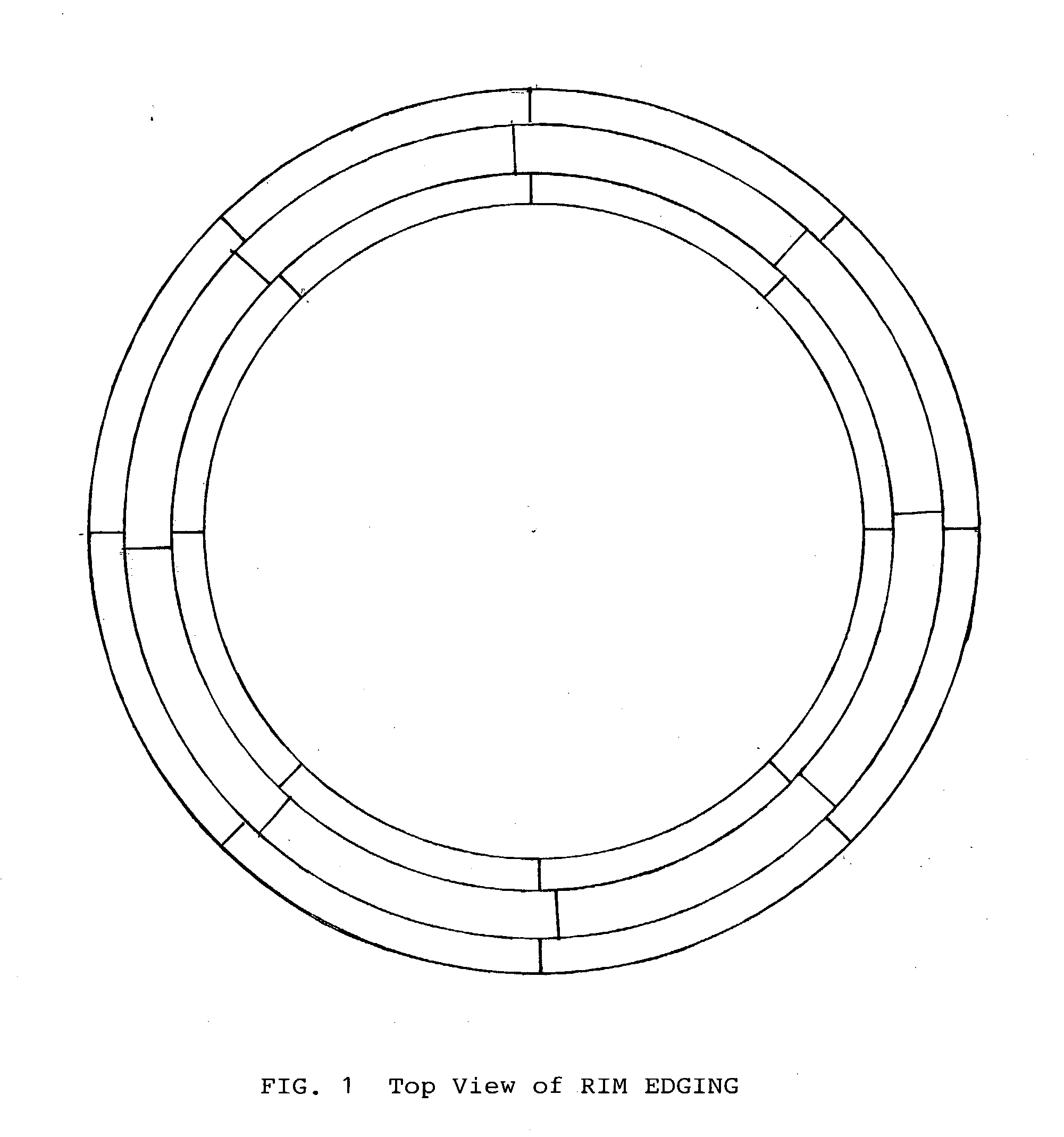Rim edging
a rim and edging technology, applied in the field of land-scaping, can solve the problems of difficult to prevent the scattering of mulch or spilling over to the adjoining lawn, the unsightly appearance of the mulch area, and the inability to solve the problem of not always successful,
- Summary
- Abstract
- Description
- Claims
- Application Information
AI Technical Summary
Benefits of technology
Problems solved by technology
Method used
Image
Examples
Embodiment Construction
[0023]FIG. 1 describes the top view of the RIM EDGING. In this figure it is shown that the RIM EDGING comprises eight sections assembled in a rim-like configuration. The number of sections depends on the size of the base of a tree requiring mulching. It may be eight for a small base or sixteen for a large base. The RIM EDGING is divided into sections for the convenience of installation. The sections are sturdy yet neither bulky nor heavy.
[0024]FIG. 2 is a perspective view of one of the RIM EDGING sections. As shown, each section resembles a section of a rim, comprising an inner circumference flange 2. an outer circumference flange 4, and a recessed top surface in the center. The inner circumference flange 2 is configured to have a “wrap-around” effect which enhances the effectiveness of the RIM EDGING for containing the mulch. The recessed top surface in the center 6 is for retaining rain water. The bottom base 8 of each RIM EDGING section is configured to be flat and wide for the ...
PUM
 Login to View More
Login to View More Abstract
Description
Claims
Application Information
 Login to View More
Login to View More - R&D
- Intellectual Property
- Life Sciences
- Materials
- Tech Scout
- Unparalleled Data Quality
- Higher Quality Content
- 60% Fewer Hallucinations
Browse by: Latest US Patents, China's latest patents, Technical Efficacy Thesaurus, Application Domain, Technology Topic, Popular Technical Reports.
© 2025 PatSnap. All rights reserved.Legal|Privacy policy|Modern Slavery Act Transparency Statement|Sitemap|About US| Contact US: help@patsnap.com



